substr 사용법
substr(시작주소, 자를길이);
split
#include<iostream>
int main(){
string str="java c c++ python";
istringstream ss(str);
string stringBuffer;
while (getline(ss, stringBuffer, ' ')){
x.push_back(stringBuffer);
cout<<stringBuffer<<" ";
}
}max
{
land[1+i][0] += max(max(land[i][1], land[i][2]), land[i][3]);
land[1+i][1] += max(max(land[i][0], land[i][2]), land[i][3]);
land[1+i][2] += max(max(land[i][0], land[i][1]), land[i][3]);
land[1+i][3] += max(max(land[i][0], land[i][1]), land[i][2]);
i++;
}
answer = *max_element(land[s_len - 1].begin(), land[s_len-1].end());map
for (auto tmp : m)
answer *= (tmp.second.size() + 1);
삼항연산자

max, max_element
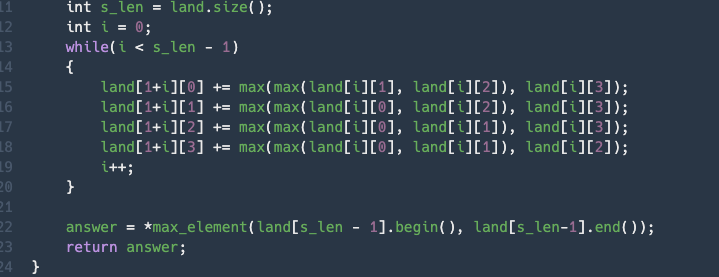
벡터를 스텍처럼.
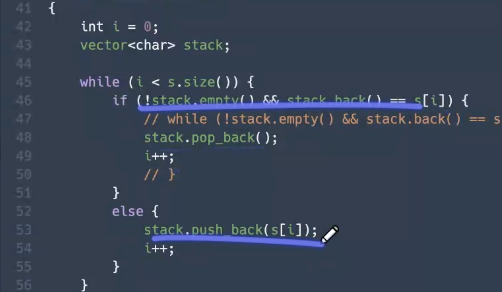
벡터를 스택처럼 사용할 수 잇음. ( 벡터는 스텍의 모든 기능이 구현된다. 효율성은 모르겟음. )
transform

벡터의 원소에 tolower같은 함수들을 적용시킬수 있음. (다른것도 가능)
split
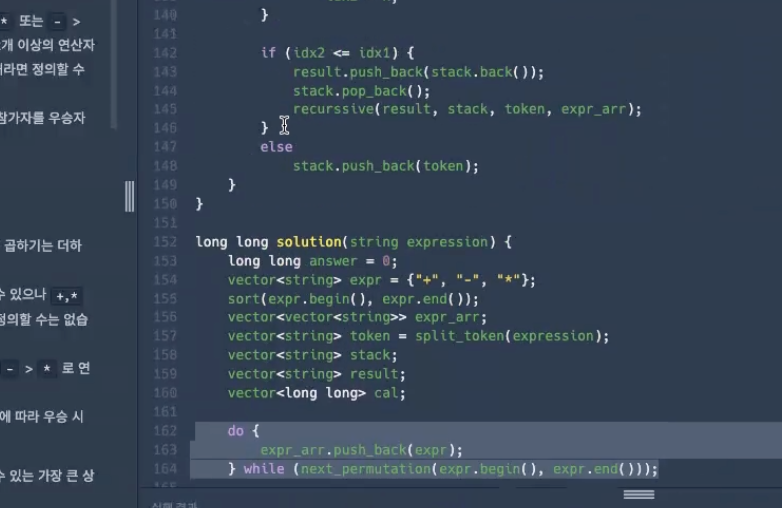
문자열 쪼개기!! c++에서는 필수
sort 람다식

람다식으로 세번째 인자에 함수주소가 아니라, 그자리에서 바로 함수를 작성할수 있음.
벡터 erase
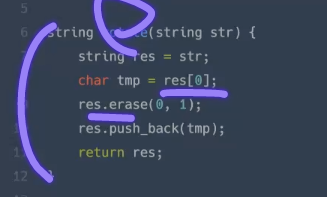
벡터도 erase 가능. 인덱스 접근 가능한건 다 erase할수 있지 않을까?
next_permutation
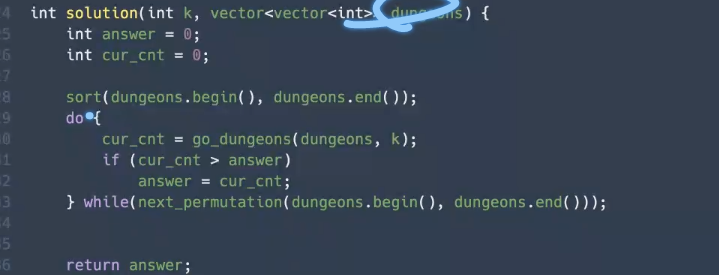
조합, dfs 로만들어도 되겠지만, next_permutation이 쉽겠지?!
max_element 람다식
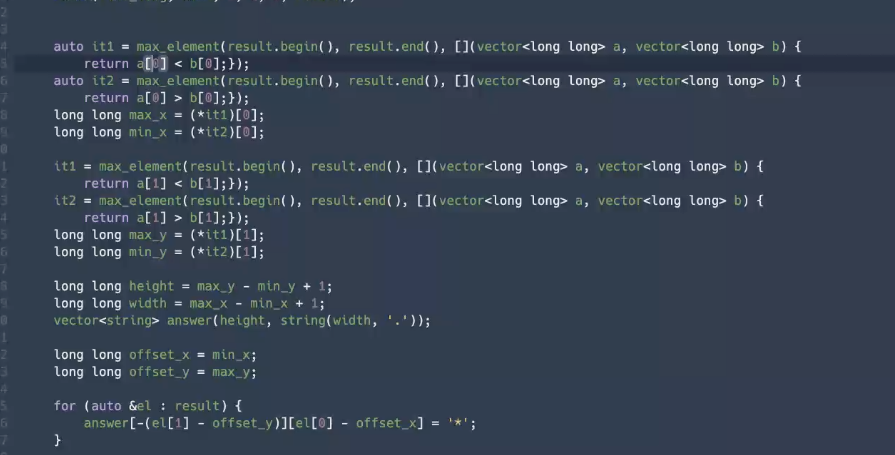
람다식으로도 가능!!
sort 세번째 인자의 함수.
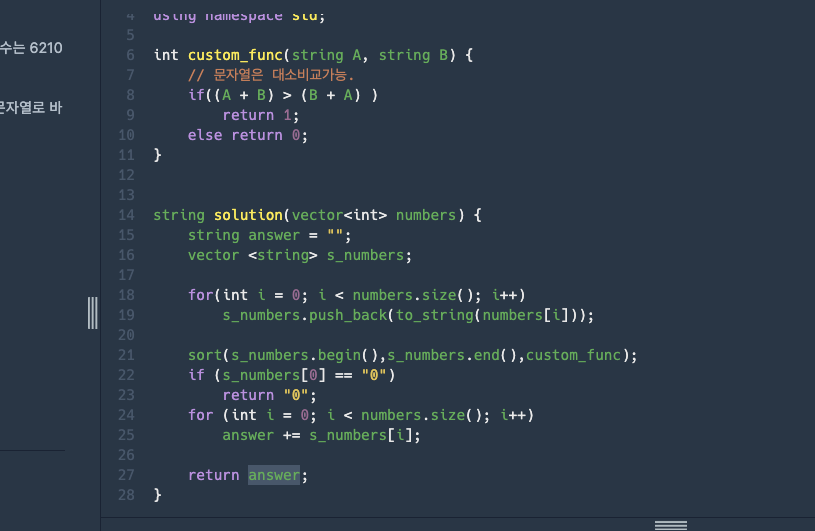
다익스트라(프로그래머스 배달 문제)
#include <iostream>
#include <vector>
#include <queue>
#include <map>
using namespace std;
int solution(int N, vector<vector<int> > road, int K) {
int answer = 0;
map<int, vector<vector<int>>> m;
for(int i = 0; i < road.size(); i++)
{
m[road[i][0]].push_back(road[i]);
m[road[i][1]].push_back({road[i][1], road[i][0], road[i][2]});
}
priority_queue<pair<int, int>, vector<pair<int, int>>, greater<pair<int,int>>> pq;
pq.push({1,0});
vector<int> cost(N + 1, 99999999);
cost [1] = 0;
while(!pq.empty())
{
//
//pair<int,int> f_pq = pq.front();
int now = pq.top().first;
int add_cost = pq.top().second;
pq.pop();
if(cost[now] >= add_cost)
{
for(int i = 0; i < m[now].size(); i++)
{
// 이게 옮겨지는곳.
//m[f_pq.first()][i][1];
if(cost[m[now][i][1]] > add_cost + m[now][i][2])
{ // now : 현재 위치.
cost[m[now][i][1]] = add_cost + m[now][i][2];
pq.push({m[now][i][1] , add_cost + m[now][i][2]});
}
}
}
}
for(int i = 1 ; i < cost.size(); i++)
if(cost[i] <= K)
answer++;
return answer;
} // map쓸때 상황봐가며 쓸것, 아무때나 쓰면 m접근자 쓰다가 복잡해짐다익스트라를 쓰는 이유가 있음.